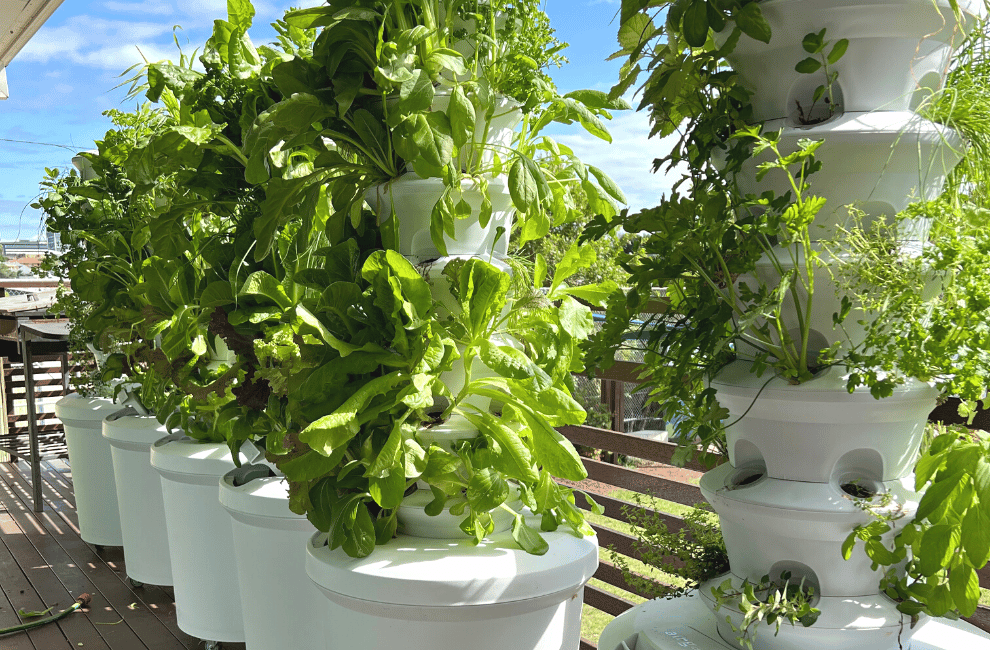
How To Grow Lettuce

A brief history of lettuce!
Lettuce is a vegetable that is native to the Mediterranean region. It is a member of the Asteraceae family, which also includes other plants like sunflowers and daisies.
Lettuce was first cultivated by the ancient Egyptians, who used it not only for its leaves, but also for its seeds, which were used for oil production. The ancient Romans also cultivated lettuce, and it quickly spread throughout Europe and the rest of the world. Today, lettuce is grown all over the world!
Varieties of lettuce
There are many different types of lettuce, each with its own unique flavour and texture. Some of the most popular lettuce varieties to grow in the Airgarden are:
- Iceberg lettuce: characterised by its crisp, crunchy texture and its mild, slightly sweet flavour. It is named after its distinctive shape, which resembles a head of ice. It is a popular choice because of its crunchy texture, but unlike some other varieties of lettuce, iceberg is not a particularly good source of vitamins and minerals.
- Cos lettuce: characterised by its long, crisp leaves and its slightly bitter flavour. Cos lettuce is a popular choice for salads because of its crunchy texture and its ability to hold up well. It is also a good source of vitamins and minerals, including vitamin K and vitamin A.
- Butterhead lettuce: characterised by its delicate, buttery flavour, it is named after its characteristic loose, floppy leaves, which are similar in texture to butter.
- Oak lettuce: characterised by its distinctive lobed leaves, which are similar in shape to oak leaves. Oak lettuce is robust and grows well year-round.
- Lollo rosso lettuce: named after its leaves, which are a deep red colour, it has a slightly sweet and nutty flavour.
- Rocket: has a peppery, spicy and slightly bitter flavour. Rocket is a great source of vitamins and minerals, including vitamin K and vitamin A, and is also a good source of antioxidants.
When to grow lettuce
The best time to grow lettuce depends on the climate and growing conditions in your area. In general, lettuce is a cool-season crop, which means it grows best when temperatures are cool, usually between 10 and 20 degrees celsius.
In areas with mild climates, lettuce can be grown year-round, with autumn and spring being the most favourable seasons. In areas with hot summers like Queensland, lettuce will grow best in autumn, winter, or early spring.
However, when growing lettuce in the Airgarden, if you stick to heat-tolerant lettuce varieties like buttercrunch lettuce, rocket, oak lettuce and lolla rosso, you can successfully grow lettuce all year round.
How to grow lettuce in your Airgarden
To start your lettuce, plant three or four seeds per coco-coir grow plug, dampen with water, and leave to germinate in your propagation dome (check out full instructions on growing seedlings here).
As seedlings germinate over the following week, take them out of the propagation dome and move them into a sunny spot for 3 hours of sunlight per day.
Seedlings should be ready to transplant about two weeks after sprouting. You should plant lettuce in the top and middle sections of your Airgarden as per these instructions on transferring seedlings into your Airgarden.
Alternatively you can use store-bought lettuce seedlings and plant them in your Airgarden using hydroponic clay balls.
After transferring lettuce seedlings into your Airgarden they will be ready to harvest in as little as two weeks.
Pruning & harvesting lettuce
You can start harvesting your lettuce as soon as it has developed 6-8 mature leaves.
Use the cut and come again method of harvesting by harvesting leaves from the outside in. Harvesting your lettuce leaves regularly will also help stimulate new plant growth, and prevent premature bolting.
A single lettuce plant will last up to 8 weeks, depending on your climate and how frequently you're pruning and harvesting. When you see your lettuce plant growing upwards with hard stems forming, this indicates that it is starting to bold and it's at the end of its lifetime and it needs to be removed and replaced with a fresh seedling. You can also tell when a lettuce is nearing the end of its lifetime when the leaves start to taste bitter.
To store lettuce for maximum longevity in your fridge, after harvesting, wash your leaves and store them in a closed tupperware container with paper towel at the bottom and between layers of leaves. Your fresh, delicious homegrown lettuce will stay crisp like this for up to 14 days, unlike lettuce bought at the supermarket.
Preventing pest and leaf issues
Although growing hydroponic lettuce is much less susceptible to pests and other soil-born funguses, you should still stay on the lookout for:
- Aphids
- Leafhoppers
- Leaf spot
- Mildew
To prevent these from happening, implement a smart pest management strategy, prune your lettuce plants regularly, and clean any wilting, browning or dead leaves.
Besides pests and diseases, a common difficulty with lettuce is its short growing cycle. Heat often causes lettuce to bolt, or start flowering and producing seed, prematurely. To delay this process you can provide your lettuce with shade during hot days and prune and harvest frequently.







